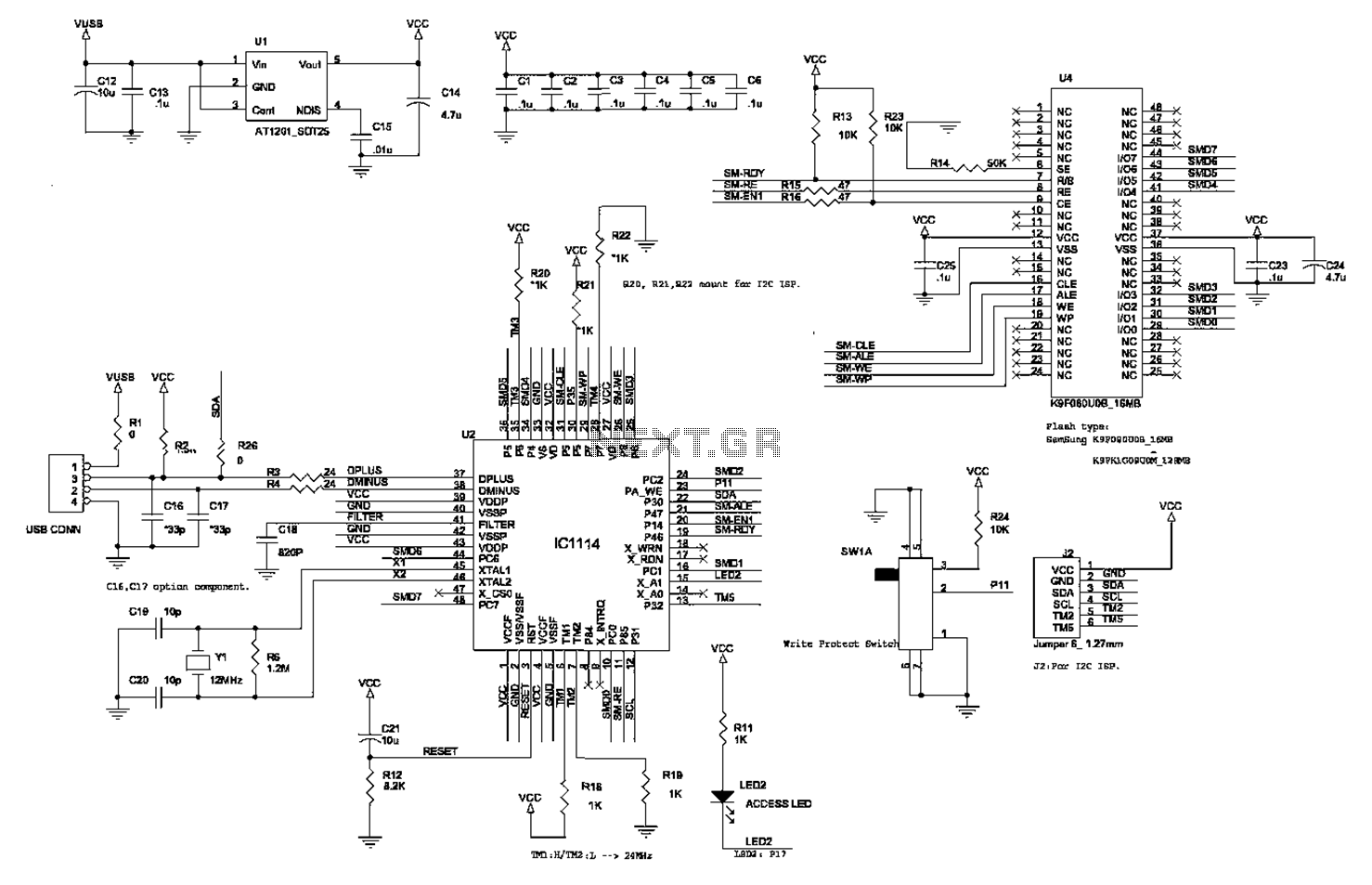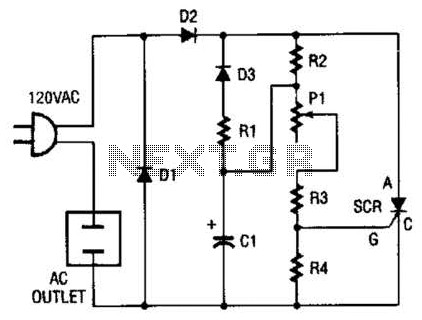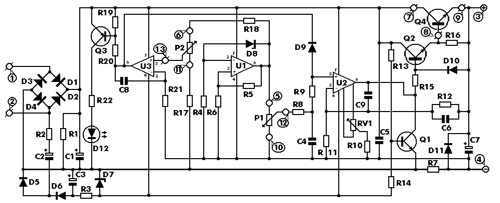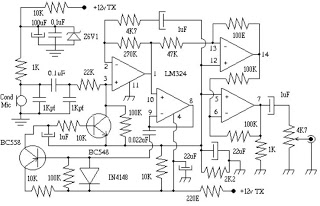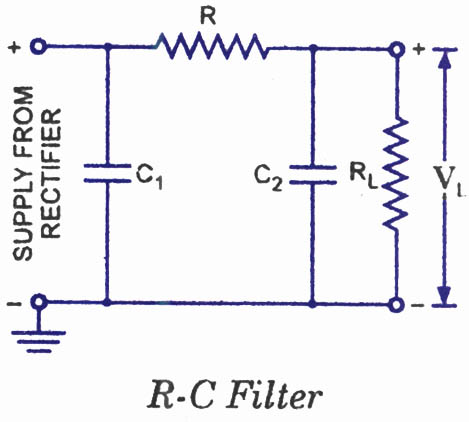
Cable broadcast amplifiers circuit protection

A cable radio broadcasting studio in rural villages and towns is often equipped with high-power amplifiers that are susceptible to damage. This vulnerability primarily arises from frequent usage without specialized management, leading to situations where the system is often powered down or operated at full input state at maximum volume. These amplifiers typically utilize large output transformers with constant voltage output. However, if the connections between the line transformers are not properly managed, it can result in high peak inverse voltage, causing breakdowns in the amplifier tubes. This circuit design proposes a solution by incorporating a mechanism that reduces the volume before shutting down the amplifier, thereby protecting the megaphone from potential damage.
The proposed circuit for the cable radio broadcasting studio aims to enhance the reliability and longevity of high-power amplifiers used in rural environments. The design integrates a volume control mechanism that automatically reduces the output level before the amplifier is powered down. This approach mitigates the risk of high peak inverse voltage, which can occur when the amplifier is abruptly turned off while operating at maximum volume.
The circuit can be structured using a combination of operational amplifiers and a relay system. Initially, the input signal enters an operational amplifier configured as a variable gain amplifier. This stage allows for real-time monitoring and adjustment of the output volume. A microcontroller can be incorporated to manage the operational amplifier's gain settings based on input conditions, ensuring that the output remains within safe limits.
Additionally, a relay can be introduced to control the power supply to the amplifier. The microcontroller can trigger the relay to disconnect the power supply only after the operational amplifier has reduced the output volume to a predefined safe level. This sequence prevents sudden changes in voltage that could lead to tube breakdowns.
Furthermore, implementing a feedback loop in the circuit can enhance performance by continuously monitoring the output voltage and adjusting the gain dynamically. This feature ensures that the amplifier operates efficiently and reduces the likelihood of damage due to improper usage.
In summary, the circuit design focuses on safeguarding high-power amplifiers in rural cable radio broadcasting studios by incorporating volume control and a controlled power shutdown mechanism. This approach not only protects the equipment from damage but also enhances the overall reliability of the broadcasting system. Cable radio broadcasting studio in rural villages and towns with a high-power amplifiers easily damaged, the main reason is the frequent use, no special management, often shutt ing down or powering at full input state at maximum volume. Such amplifiers are mostly large output transformer constant voltage output, there are a number of lines between the line transformer, if done incorrectly, it will in the open, shut down instantly generate high peak inverse voltage amplifier tube breakdown. This circuit can be adopted before the first input signal amplifiers amplifier work off, before stopping the first volume down, thereby protecting megaphone is not impaired.
The proposed circuit for the cable radio broadcasting studio aims to enhance the reliability and longevity of high-power amplifiers used in rural environments. The design integrates a volume control mechanism that automatically reduces the output level before the amplifier is powered down. This approach mitigates the risk of high peak inverse voltage, which can occur when the amplifier is abruptly turned off while operating at maximum volume.
The circuit can be structured using a combination of operational amplifiers and a relay system. Initially, the input signal enters an operational amplifier configured as a variable gain amplifier. This stage allows for real-time monitoring and adjustment of the output volume. A microcontroller can be incorporated to manage the operational amplifier's gain settings based on input conditions, ensuring that the output remains within safe limits.
Additionally, a relay can be introduced to control the power supply to the amplifier. The microcontroller can trigger the relay to disconnect the power supply only after the operational amplifier has reduced the output volume to a predefined safe level. This sequence prevents sudden changes in voltage that could lead to tube breakdowns.
Furthermore, implementing a feedback loop in the circuit can enhance performance by continuously monitoring the output voltage and adjusting the gain dynamically. This feature ensures that the amplifier operates efficiently and reduces the likelihood of damage due to improper usage.
In summary, the circuit design focuses on safeguarding high-power amplifiers in rural cable radio broadcasting studios by incorporating volume control and a controlled power shutdown mechanism. This approach not only protects the equipment from damage but also enhances the overall reliability of the broadcasting system. Cable radio broadcasting studio in rural villages and towns with a high-power amplifiers easily damaged, the main reason is the frequent use, no special management, often shutt ing down or powering at full input state at maximum volume. Such amplifiers are mostly large output transformer constant voltage output, there are a number of lines between the line transformer, if done incorrectly, it will in the open, shut down instantly generate high peak inverse voltage amplifier tube breakdown. This circuit can be adopted before the first input signal amplifiers amplifier work off, before stopping the first volume down, thereby protecting megaphone is not impaired.
